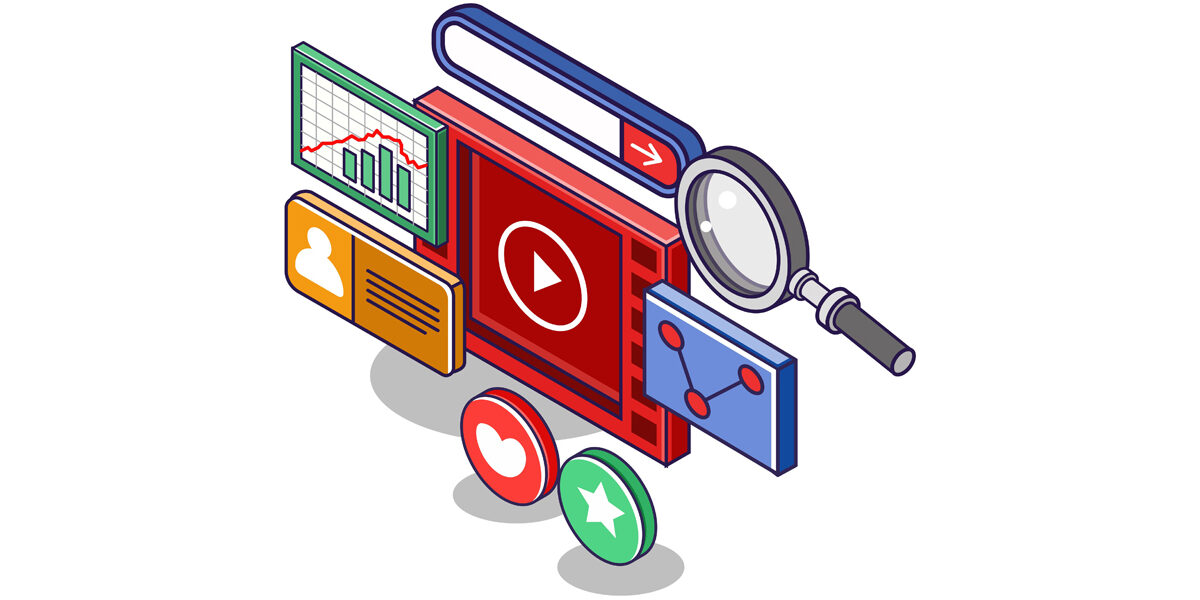
Today’s customers expect more than generic marketing blasts—they crave personalized experiences that speak to their unique needs, preferences, and behaviors. While personalization used to mean adding a first name to an email subject line, it’s now far more sophisticated. Thanks to advances in Artificial Intelligence (AI), brands can deliver customized content, product recommendations, and marketing messages across channels, at scale.
In this post, we’ll explore how AI-driven personalization works, why it’s so effective, and how you can implement it to create tailored customer journeys. Whether you’re a small e-commerce business or a multinational enterprise, AI can help you meet rising consumer expectations, boosting engagement, loyalty, and revenue.
1. Why Personalization Matters
1.1 Rising Customer Expectations
Consumers have grown accustomed to the personalized experiences offered by digital leaders like Amazon, Netflix, and Spotify. They now expect a similar level of customization from all brands they interact with—regardless of size or industry.
1.2 Increased Engagement and Loyalty
Personalized recommendations and messages make users feel understood and valued. This often results in higher click-through rates, longer session durations, and stronger brand loyalty over time.
1.3 Higher Conversion Rates
When your marketing resonates on an individual level, customers are more likely to convert. Whether it’s a targeted email campaign or product suggestions on your homepage, relevant content leads to more sales, downloads, or subscriptions.
For more on how AI is reshaping marketing in general, check out How AI Is Revolutionizing Digital Marketing.
2. Key Components of AI-Driven Personalization
2.1 Data Collection and Processing
AI relies on vast amounts of customer data—browsing history, purchase records, demographic information, behavioral cues (like click paths)—to identify patterns and preferences. Storing and managing this data securely is essential for accurate insights and privacy compliance.
2.2 Customer Segmentation
Once the data is collected, machine learning algorithms group users into segments based on shared attributes. These segments can be broad (e.g., first-time visitors vs. returning customers) or highly granular (e.g., frequent purchasers of athletic wear who prefer green-colored products).
2.3 Predictive Modeling
AI predictive models analyze historical and real-time data to forecast future behaviors—such as the likelihood of making a purchase, upgrading a subscription, or disengaging. This predictive layer enables proactive marketing strategies.
2.4 Content and Experience Customization
Finally, AI uses these insights to serve personalized messages, product recommendations, or user interfaces across touchpoints. This ensures each customer sees content that aligns with their unique journey.

3. Practical Applications of AI Personalization
3.1 Product Recommendations
E-commerce sites often use recommendation engines to display products that match a visitor’s browsing or purchase history. This tactic can significantly boost cart size and order frequency. Tools like Amazon Personalize or Salesforce Einstein make it easier for businesses to implement such features.
3.2 Dynamic Email Campaigns
AI can personalize subject lines, email layouts, and product suggestions within emails—tailoring messaging based on each recipient’s past behavior and predicted interests. This goes beyond basic segmentation, achieving true one-to-one communication.
3.3 Website Customization
Personalization platforms can dynamically alter website headlines, banner images, or calls to action based on user profiles. For example, a repeat visitor might see loyalty-based offers, while a new user sees an introductory discount.
3.4 Chatbots and Conversational AI
Smart chatbots leverage user data to offer personalized greetings, product suggestions, and quick issue resolutions. They can remember past interactions, ensuring returning users don’t have to repeat information—improving overall user satisfaction.
3.5 Push Notifications and Mobile Apps
AI-driven push notifications can suggest relevant content or remind users of items left in their online cart, timing messages based on typical user behavior patterns (e.g., sending a push around lunchtime if that’s when someone usually shops).
Interested in blending AI personalization with interactive elements like quizzes or polls? Check out Interactive Content: Why Engagement Is the Future of Marketing
Interactive Content: Why Engagement Is the Future of Marketing
4.1 Streamlined Operations
Manually creating separate campaigns for multiple customer segments is labor-intensive. AI automates much of the segmentation and content customization, allowing your marketing team to focus on strategy and creativity rather than repetitive tasks.
4.2 Real-Time Adaptation
Unlike traditional marketing efforts that might be updated monthly or quarterly, AI-powered personalization reacts in real time. If a user’s preferences shift, so do their recommendations—no manual intervention required.
4.3 Improved Customer Satisfaction
When customers see relevant offers or products, they’re more likely to have a positive experience. This satisfaction can translate into word-of-mouth referrals and long-term loyalty.
4.4 Data-Backed Insights
AI tools not only personalize but also generate analytics on user interactions. These data points reveal deeper trends—helping you fine-tune products, services, and messaging with each campaign iteration.

5. Implementing AI-Driven Personalization
5.1 Define Clear Goals
Are you aiming to increase average order value, reduce churn, or boost email click-through rates? Clarify your objectives so your personalization efforts align with measurable business outcomes.
5.2 Evaluate Your Data Readiness
Assess where and how you currently collect customer data. If data is siloed across different departments or platforms, consider investing in a Customer Data Platform (CDP) to unify records.
5.3 Choose the Right Tech Stack
Solutions range from all-in-one marketing suites (e.g., Salesforce, HubSpot) to specialized AI platforms (e.g., Segment, Bloomreach). Select tools that seamlessly integrate with your existing CRM and analytics infrastructure.
5.4 Start Small, Then Scale
Rather than overhauling your entire marketing strategy at once, begin with a pilot program—like AI-driven product recommendations on a single category page. Track the results, refine, then expand to other channels.
5.5 Monitor and Optimize
Continuously review key metrics such as click-through rates, conversion rates, and user engagement. AI models should be retrained regularly to reflect shifting consumer behaviors.
For deeper insights on harnessing data and analytics, read our post on Data-Driven Decision Making: AI-Powered Analytics & Insights.
6. Overcoming Common Challenges
6.1 Data Privacy and Security
Personalization hinges on customer data, which makes privacy compliance critical. Adhere to GDPR, CCPA, and other regulations by obtaining user consent and ensuring robust data security measures.
6.2 Avoiding the “Creepy Factor”
Consumers appreciate relevant suggestions, but hyper-personalization—like referencing highly specific behaviors or private details—can feel invasive. Strive for a balance that respects boundaries.
6.3 Maintaining Content Freshness
Personalization engines are only as good as the content available. Regularly update product catalogs, blog posts, or promotional materials to ensure users see fresh and accurate recommendations.
6.4 Technology and Skill Gaps
Implementing AI often requires specialized expertise in data science and machine learning. Evaluate whether you’ll train existing team members, hire new talent, or partner with external consultants or agencies.

7. Measuring the Impact
Engagement Metrics
Track open rates, click-through rates, and session durations to gauge whether personalized content resonates more than generic messages.
Conversion and Revenue
Are personalized campaigns driving higher conversions or average order value (AOV) than previous approaches? Measure changes in purchase frequency, basket size, and total revenue over time.
Customer Lifetime Value (CLV)
An increase in repeat purchases or subscription renewals indicates that personalization is fostering loyalty. Monitor this metric to see if users engage with your brand long term.
Churn Rates
If AI personalization reduces churn by catching at-risk customers—offering them targeted incentives or relevant content—that’s a clear sign your efforts are paying off.
If you’re planning to incorporate video into your personalized journeys, take a look at our Video SEO: How to Optimize Your Content for Maximum Visibility. High-ranking personalized videos can further engage niche segments.
8. Real-World Examples
Netflix’s Recommendation Engine
Netflix is a hallmark example of AI-powered personalization, delivering tailored recommendations based on each user’s viewing history, ratings, and session behavior. This approach has significantly minimized churn, keeping viewers addicted to fresh, relevant content.
Spotify’s Daily Mixes and Discover Weekly
Spotify uses AI to analyze listening habits and generate curated playlists—like “Discover Weekly” and “Daily Mix”—tailored to individual taste profiles. Users often credit these playlists for discovering new artists and staying on the platform longer.
Sephora’s Chatbot and Product Recommendations
Beauty retailer Sephora employs AI chatbots to offer personalized product suggestions after brief skin or makeup assessments. The brand also tailors website product listings and email offers to each customer’s purchase and browsing history.
Booking.com’s Personalized Travel Suggestions
Booking.com uses past travel data—destinations, accommodations, reviews read—to suggest new places users might love. This frequent re-engagement method helps Booking.com remain a top choice for travelers.
Conclusion
Personalization at scale is no longer a luxury reserved for tech giants—it’s a necessity for brands that want to thrive in a customer-centric marketplace. By employing AI-driven insights, segmentation, and dynamic content, you can meet individual needs without sacrificing efficiency. The result? Stronger customer loyalty, higher conversions, and a significant competitive edge.





